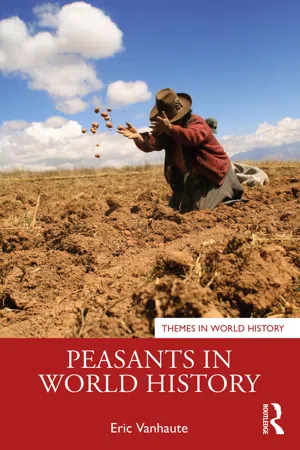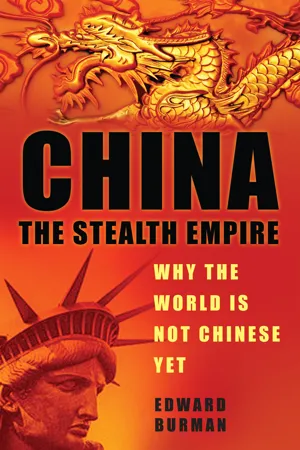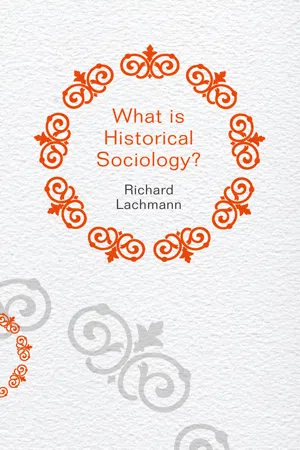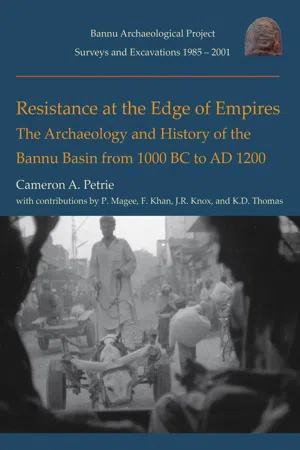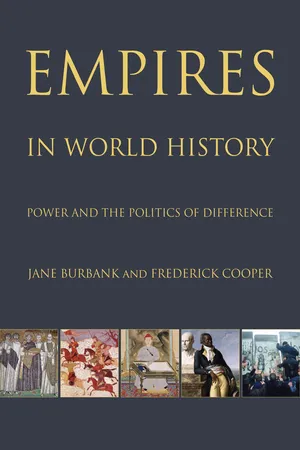History
Land Based Empires
Land-based empires refer to large territories controlled by a single ruler or government, which are primarily based on land rather than sea power. These empires were often characterized by a centralized government, a strong military, and a diverse population. Examples of land-based empires include the Ottoman Empire, the Mongol Empire, and the Roman Empire.
Written by Perlego with AI-assistance
Related key terms
5 Key excerpts on "Land Based Empires"
- eBook - ePub
- Eric Vanhaute(Author)
- 2021(Publication Date)
- Routledge(Publisher)
The first great agrarian empires and civilizations, the Mesopotamian empires of Sumer starting with Uruk, the Egyptian empires of the Nile Valley and the Indus Valley city-states, originated in the fourth millennium BCE. Over the next five millennia, empires rose and fell. There were about 60 mega-empires of at least one million square kilometers (380,000 square miles) between 3000 BCE and 1800 CE. Except for the Inca Empire, they all developed in Afro-Eurasia, from the African and European Atlantic coasts to the East China Sea. China, Egypt and Mesopotamia, with their fertile river plains, were regions with the most continuous succession of empires. A nomadic people, the Mongols, developed the most extensive territorial empire in world history, but it did not last long as a unified territory (thirteenth century CE). Empires developed from a center and gradually spread to include increasingly remote areas. They had a large sphere of influence, comprising tens of thousands to a few million subjects. The central administration was supported with its own bureaucracy, with formalized legislation, a system with compulsory retributions and an official state religion. The economic organization was based on a successful agricultural or pastoral system, the production of crafts and internal and external commercial networks. The transition from small to larger political control systems was not a natural course of events. The variations in time and location were huge. History teaches us that at least five conditions defined success or failure of regional empire building. The first is population growth. Empires could only develop where a population minimum was exceeded and territorial growth was not limited by narrow natural borders. Most large empires arose in Eurasia, where more than three-quarters of the world population lived and worked. The second is productive agriculture or pastoralism. The organization of food production was the primordial task of every social organization. When the territorial scale expanded, so did the need for a division of labor, more economic specialization and more control. The third is conflict management and defense against external threats. Larger population groups were protected more efficiently by a centrally led military apparatus. The fourth is the transition from a system of reciprocal, mutual exchange to a redistributive system. Large-scale transactions required a controlled set of arrangements of collection and distribution. This coincided with the development of registration and coding systems, from which writing originated in several places around the world: Mesopotamia and Egypt in approximately 3000 BCE, China in about 1300 BCE and Central America in approximately 900 BCE. The fifth is better internal and external communication systems, enabling a faster exchange of people, goods and information.Agrarian empires were expansionist states that incorporated diverse societies over increasing distances. They were tributary, rather than commercial and colonial, based on the conquest of agrarian or pastoral societies and the taxation of peasant surplus production. They were ruled by a central government and associated elites, but even more important was the role of local collaborators for successful imperial control. The location of cities was critical to the economic development and political success of the state. They were often, but not always, found in fertile areas capable of generating agricultural surpluses. Almost all of them needed massive food transfers to sustain themselves. In order to control their hinterland and to provide a variety of services and manufactures, early urban centers had to diversify and intensify risk-avoiding strategies in food production. They promoted agricultural variation, both in crops and livestock, and diversification by storing significant quantities of staple food and establishing reliable trade relationships outside the region. - eBook - ePub
China: The Stealth Empire
Why the World is Not Chinese Yet
- Edward Burman(Author)
- 2008(Publication Date)
- The History Press(Publisher)
Introduction: Meanings of Empire
Most Western definitions of empire run something like this, from the Concise Oxford Dictionary: ‘an extensive group of states ruled over by a single monarch or ruling authority’. The monarch might be Queen Victoria or King Charles V of Spain, and the ruling authority might be Augustus or Suleiman the Magnificent, but the meaning is clear to us. As is the nature of the associated empires. For those we are familiar with have usually taken one of two main forms: land-based empires, which extend across a contiguous territory, such as the Russian Empire; and seaborne empires, where naval strength is of paramount strategic importance, such as the British Empire. The problem is that we are so conditioned by this approach, and have recognised and used this sense of the word ‘empire’ since schooldays, that this is what most of us have in mind when we read the phrase ‘Chinese Empire’. But the Chinese themselves understand the concept of empire – if indeed they have one at all – in a very different way, usually in the negative sense of a Western imperial power that encroached upon their country’s sovereignty in the nineteenth century. So before going on to examine the ‘Chinese Empire’, whether past, present or future, it will be useful to clarify our starting point by asking the apparently innocuous question, what is China? For interpretations of the past and predictions about the future will be different if we consider it to be a Western-style empire, a nation-state, a party-state, a civilisation, a cultural construct, a self-perpetuating bureaucratic organisation, a ‘civilization pretending to be a state’,6 or what has been described more elaborately as a ‘state defined by a culture claiming to exemplify the correct universal ethical system’7 and a ‘civilization-state with a variety of autonomous regions or even a loosely structured Chinese federation of different political entities.’8 - eBook - ePub
- Richard Lachmann(Author)
- 2013(Publication Date)
- Polity(Publisher)
4 Empires For most of human history some peoples have been able to dominate others, either in formal empires or through indirect means. An empire, in Julian Go's (2011, p. 7) definition, is “a sociopolitical formation wherein a central political authority … exercises unequal influence and power over the political (and in effect sociopolitical) processes of a subordinate society, peoples, or space.” This chapter does not offer a critical review of the myriad definitions of empire. Those definitions all agree that empires differ from non-imperial polities in that they exert power over territories and peoples beyond their core polity, and that the essential dynamic of an empire is produced by the interaction between the core's efforts to sustain or expand and deepen its rule over peripheries and the peripheries’ efforts to weaken or end the core's rule over them. The imperial dynamic is a temporal dynamic, which means that both imperiums and subordinate territories can be understood only as changing products of past sequences of conquest, incorporation, and resistance. A failure to see empires as dynamic and contingent social systems mars S. N. Eisenstadt's The Political Systems of Empires, a massive comparative study of ancient empires whose publication in 1963 helped revive interest in comparative historical sociology. Eisenstadt mined a vast array of historical cases to find what he saw as commonalities in the political organization of empires. His main finding is that imperial power in all empires depended on the creation of what he labels “free-floating resources” – i.e., resources not tied to local institutions, such as profits from long-distance trade or mining. The expansion or decline of such free-floating resources then becomes the main dynamic in Eisenstadt's history, although he mainly asserts rather than explains their ebb and flow - eBook - ePub
Resistance at the Edge of Empires
The Archaeology and History of the Bannu basin from 1000 BC to AD 1200
- Cameron A. Petrie(Author)
- 2020(Publication Date)
- Oxbow Books(Publisher)
et al. 2001; Burbank and Cooper 2010; see also Hardt and Negri 2001; Bhattacharya 2018). This wealth of literature is a genre in itself, and Sinopoli (1994: 160) noted that although there has been a range of definitions of empire, they are typically seen as ‘a territorially expansive and incorporative kind of state, involving relationships in which one state exercises control over other socio-political entities’. They are thus distinct from nation states characterised by a single ‘people’ (Burbank and Cooper 2010: 8). This volume is principally concerned with imperial administration and economy, and resistance.Sinopoli (1994: 165) noted that a major goal and a significant outcome of imperial expansion in most historic contexts was the acquisition of regularised revenues through tribute or taxes, and a number of approaches to imperial administration have been characterised. Rulers might engage in either direct or indirect measures of revenue collection, which must be administered, and while direct measures might be suitable for small-scale kingdoms, indirect methods such as the employment of tax officials might have been more suitable for large areas, with varying environmental conditions and produce (Sinopoli 1994: 165; 2001b: 197).These types of political and/or economic control are typically viewed as lying on a continuum of integrating strategies in that span between weak and strong extremes (Sinopoli 1994: 160, Table 1). For example, in discussing the political economy of the Inca empire in comparative terms, Earle and D’Altroy (1989: 187; D’Altroy 1992: 19–23) suggested that the variable strategies used to administer empires can be seen to lie on a continuum between hegemonic and territorial control: the former permitting varying degrees of autonomy but demanding military submission and the payment of tribute, and the latter involving direct state presence in dominated regions (see also Luttwak 1976; Sinopoli 1994: 160). - eBook - ePub
Empires in World History
Power and the Politics of Difference
- Jane Burbank, Frederick Cooper(Authors)
- 2021(Publication Date)
- Princeton University Press(Publisher)
In western Europe, Christianity (and in part of that region Latin-derived languages) proved a more durable Roman legacy than state institutions. A politics of landed magnates with armed retainers emerged from the collapse of the Roman center. As competing lords reclaimed and redefined Rome’s legal traditions, they enforced—for themselves and upon their dependents—the idea of noble rights and status. Lords provided would-be emperors with assemblages of military followers, but they could do the same for opponents of any empire-builder. Charlemagne, crowned by the pope in 800, came closest to reestablishing a universalizing empire, but his successors soon fell victim to rivalries and aristocratic combinations. The fragmentation of power in Europe continued to stymie attempts to reconstitute a Roman empire.Islamic empires, starting with the Umayyads, avoided the aristocratic conundrum by relying instead on an imperial household, staffed largely by outsiders—slaves, clients, and recent converts. On the Eurasian steppe, empire-builders used other tactics to secure intermediaries—blood brotherhood, marriage politics, and tribal allegiances. From ancient times, nomadic peoples had made major technological contributions to state formation across Eurasia, including the armed horseback warrior. The intersections of agrarian empire, from the Qin and Han dynasties onward, with the military and commercial talents of “barbarians” on their borders forced Chinese leaders to build a polity capable of both resisting and managing nomads. Turkic confederacies created the institution and title of the khan. Warriors brought as slaves from Eurasia—with their steppe ethos and skills at horsemanship—were crucial to several empires, including the Abbasid caliphate with its slave armies and the Mamluks, slave-warriors who had taken power into their own hands. The Seljuks who conquered Baghdad in 1055, and later the Mongols, who captured the city in 1258, were organized along Eurasian principles and brought Turkic and Mongol practices into the Mediterranean arena.
Index pages curate the most relevant extracts from our library of academic textbooks. They’ve been created using an in-house natural language model (NLM), each adding context and meaning to key research topics.
